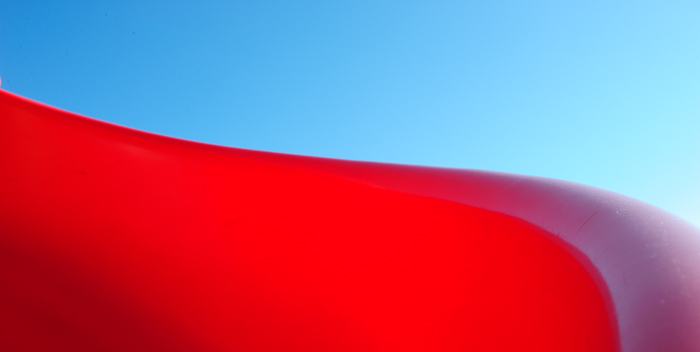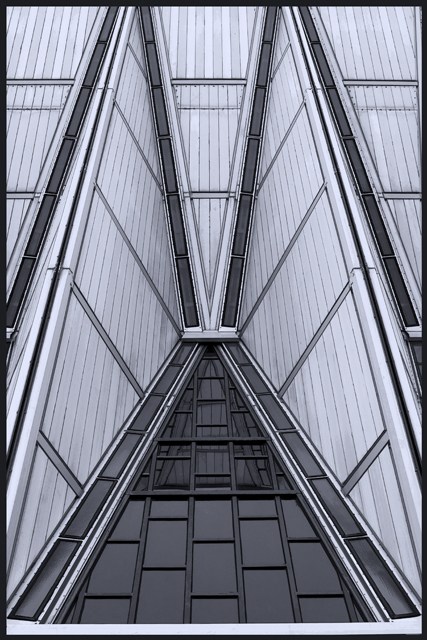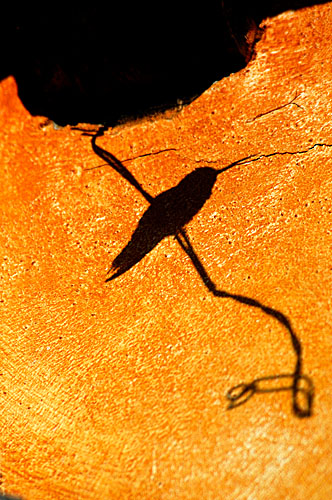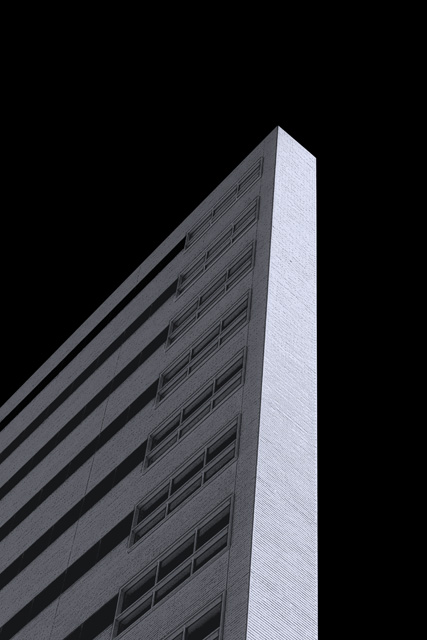I should start by saying that "line," "shape" and "form" are really three different concepts, and that idealy we would have three separate assigments that cover each one of these concepts individually. However, the reality is that these compositional elements are most often found together, and it is very difficult to find a subject that has "shape" without a corresponding "line" or "form." So to make it easier, we will cover all three concepts in the same assignment.

As is usually the case in our world, the words "line," "shape," and "form" have different meanings or definitions based on the context in which they are used. So, before we get started with the assignment, let's talk a little bit about what these concepts mean within the context of photography.
We often hear the term "line" used as part of the phrase "leading lines," which is used to refer to a strong line in your image, such as a road, river, or some other geographic feature that "leads" the viewers attention through the image. Although they
can in some cases be the same thing, what we are typically refering to when we use the term "line" in conjunction with "shape and form" is the line formed by the border or boundary between two objects, or the line formed by a strong graphical element within the image. These lines often accentuate geometric shapes within the image, and as such, they are different from the use of the term in the phrase "leading line." It might help to look at some examples. The image below has a sinous "line" defined by the transition between complementary colors. The curve of this line helps to define the "feel" of this image.
 Slide
SlidePhotographed by Keith
"Complementary Colors" Assignment
Because "line" is often determined by the border of different objects within your scene, it plays a role in defining the "balance" of your image. A strong line through an image is a natural point from which we judge the "balance" of the elements on either side of the line. The image above is "balanced" because the relative weight of the objects above and below the line is essentially equivalent. Creating an "unbalanced" image will lead to a sense of unease in the viewer, and is a technique that is often used when the photographer is trying to invoke an "uneasy" or "anxious" feeling in the viewer.
The next example is composed of a series of lines that segment the various geometric components of the building. The straight angular lines give a totaly different feel to the image than the curved line in the first image.
 Angles Going In
Angles Going InPhotographed by Joyce Donaldson
"Patterns" Assignment
As seen in the examples above, different types of lines can create or emphasize different moods. Curved lines help create a sense of grace, smoothness, and sensuality in a photograph, while straight lines create a sense of strength. The orientation of lines in the image is also important. Vertical lines communicate a sense of achievement and power, while horizontal lines are often used to evoke a more tranquil feeling. You can emphasize vertical lines in your image by composing the image in a vertical or "portrait" orientation, or emphasize horizontal lines by composing the image in a horizontal or "landscape" orientation. An especially powerful type of line is the diaogonal line. Diagonal lines can be used to convey a dynamic feeling to an image, even if the subject is "static."
It is certainly no coincidence that the architects of the Chapel at the Air Force Academy chose to design the spires of the chapel with strong diagonal lines "reaching for the sky."
 Cadet Chapel Spires
Cadet Chapel SpiresPhotogaphed by Tom Croak (Kermit)
Linear Perspective Assignment
In photography, "shape" is considered to be the two-dimensional outline of a subject, while "form" is the three dimensional perspective achieved by adding shadows and linear perspective to convey depth to a subject.
Shape and form can also be described as either organic or geometric. Naturally occuring "soft" forms are usually considered "organic," whereas geometric shapes and forms are often man made and correspond to named geometric shapes such as squares, circles, cubes, spheres, etc. Here's an "organic" form from the "Cold" assignment:
 Nature's Whimsy
Nature's Whimsy(Cold Assignment)
And geometric forms (and line) from the "Balance" assignment:
 Headlight
HeadlightPhotographed by Joyce Donaldson
Balance Assignment
This image by Cindy Miller Hopkins is one of the few images I found that illustrated "shape" without "form." A silouette (or in this case a shadow) is a two dimentional representation of an object, without depth or "form."
 Hummingbird Shadow
Hummingbird ShadowPhotographed by Cindy Miller Hopkins
(Abstract Album)
The very graphical image below by Joyce Donaldson illustrates the power of strong lines and "dynamic" diagonals.
 Black and White
Black and WhitePhotographed by Joyce Donaldson
Simplicity Assignment
The assignment for the week of 12 - 18 October, 2009 is "Line, Shape and Form." You should strive to compose an image where "line, shape and form" are the primary compositional elements within the image. Please upload your submissions to the "Line, Shape and Form" album in the Weekly Assignments category of the Gallery no-later-than midnight, Mountain Time (GMT-07:00) on Sunday, 18 October 2009.
I will look forward to seeing your images.
Keith